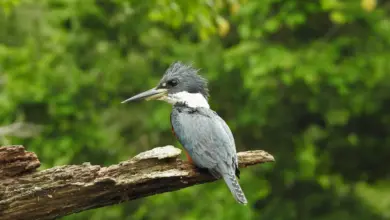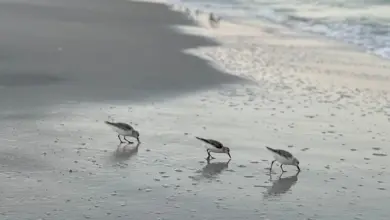Red-faced Cormorants, Red-faced Shags or Violet Shags
Red-faced Cormorants, Red-faced Shags or Violet Shags
The Red-faced Cormorants (Phalacrocorax urile) – also known as Red-faced or Violet Shags – are large, dark waterbirds found in the far north of the Pacific Ocean and the Bering Sea – from the eastern tip of Hokkaid? in Japan (via the Kuril Islands), the southern tip of the Kamchatka Peninsula and the Aleutian Islands to the Alaska Peninsula and the Gulf of Alaska.
The Red-faced Cormorants were named for their distinctive red faces.
They are mostly sedentary (non-migratory), only dispersing over nearby coasts during the winter.
They are most easily recognized by the way they perch with their wings spread out to dry them after foraging in water.
Their closest relatives are the Pelagic Cormorants (P. pelagicus); the ranges of these two species only overlap in Alaska.
Adults have few predators, except for the occasional river otter. The eggs and the young are often taken by birds of prey (such as the Bald Eagles), Gulls, and corvids.
Description
Measurements:
- Their average length is 28 inches (71 cm)
- Their extended wings are 25 – 29 inches (64 – 74 cm) long. The wings of females are usually about 2 inches (5 cm) shorter than those of males. Their wingspan is about 48 inches (121.9 cm)
- Adults weigh between 3.3 – 5.1 lbs (1.5 – 2.3 kg). Females are usually about 12.3 oz (350 g) lighter.
Identification:
- These large cormorants have long, thin necks and long tails
- Their dark, glossy plumage is mostly deep greenish blue in color, turning purplish or bronze on the back and sides.
- The bare facial skin is red – brighter in breeding birds and less vivid in non-breeding adults; distinguishing them from their relatives, the Pelagic Cormorants.
- The gular region (area between the chin and the throat) is blue
- White flank patches
- The long, hooked bill is partially yellow
- Males and females look alike, except for the females being slightly smaller in size.
- Breeding Plumages:
- Double-crest on the head
- Thin, white plumes on the flanks, neck and rump
- The face is turning a bright orange or red. The forehead turns red.
Immature:
- Very dark plumage, and lack the distinctive red face of breeding adults.
Similar species:
- Loons lack the hooked bills of the Red-faced Cormorant.
- No other cormorant species has a small blue gular region with a bright red forehead.
- In the breeding season, the Red-faced Cormorant has a red forehead and a pale bill. Other cormorants lack the white flank patch.
Diet / Feeding
Red-faced Cormorants feed on various small fish (cottids), crabs, and shrimps mostly caught by diving to depths of up to 100 feet (~30.5 meters) from the surface of the water and chasing prey under water.
They generally grab fish in their bills, without spearing them.
Breeding / Nesting
Red-faced Cormorants form breeding colonies along rocky coasts or on offshore islands – often alongside the Pelagic Cormorants.
Their nests are typically situated on the ledges of cliffs. Nesting typically occurs in May or June.
Calls / Vocalizations / Sounds
Sound Recordings
Alternate (Global) Names
Chinese: 红脸鸬鹚 … Czech: Kormorán cervenolící, kormorán červenolící … Danish: Rødmasket Skarv … Dutch: Aleoetenaalscholver, Roodmaskeraalscholver … German: Rotgesichtscharbe … Estonian: sarvikkormoran … Finnish: Beringinmerimetso … French: Cormoran à face rouge … Italian: Cormorano faccia rossa, Cormorano facciarossa … Japanese: chishimaugarasu, Chishima-ugarasu … Korean: 붉은뺨가마우지 … Norwegian: Rødmaskeskarv … Polish: kormoran czerwonoczelny … Russian: Баклан краснолицый, Краснолицый баклан … Slovak: kormorán cervenolíci, kormorán červenolíci … Spanish: Cormorán Carirrojo, Cormorán de Cara Roja … Swedish: Beringskarv
Species Research by Sibylle Johnson
Cormorant Information … Listing of Species … Cormorant / Shag Species Photos
Please Note: The articles or images on this page are the sole property of the authors or photographers. Please contact them directly with respect to any copyright or licensing questions. Thank you.



